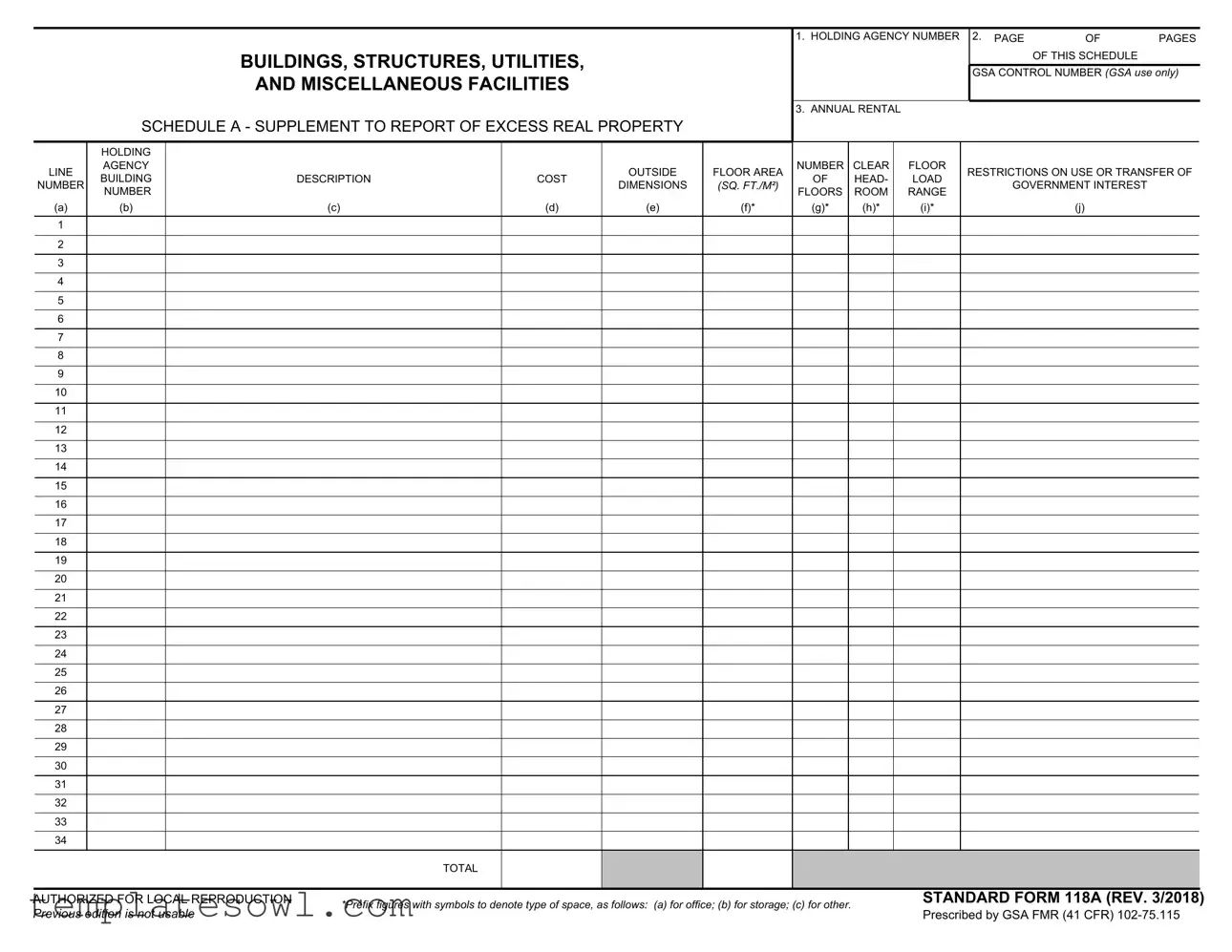What is the purpose of the Fs 118A form?
The Fs 118A form, officially known as the Supplement to Report of Excess Real Property, is used to provide detailed information about buildings, structures, utilities, and miscellaneous facilities that the federal government considers excess. By filling out this form, the holding agency can report on various aspects of the property, which assists in managing and ultimately disposing of properties no longer needed.
Who is required to fill out the Fs 118A form?
This form must be completed by federal agencies that hold excess real property. When an agency determines that a property is no longer required for its operations, it is their responsibility to accurately fill out this form. This helps ensure that all pertinent details are recorded and that the property can be managed appropriately.
What kind of information is collected on the Fs 118A form?
The form collects essential information such as the holding agency number, the dimensions of the space in both square feet and square meters, and the description of the property. Additionally, there are fields to indicate the annual rental cost, floor area, government interest number, and any restrictions on use or transfer. Each type of space—office, storage, or other—must also be clearly marked.
How is the information from the Fs 118A form used?
The data collected from the Fs 118A form is utilized by the General Services Administration (GSA) to assess the status of federal properties. This information plays a crucial role in determining how these properties can be disposed of, transferred, or rehabilitated. It ensures that the federal government complies with regulations regarding excess properties, facilitating efficient asset management.
What does it mean if a property has restrictions on use or transfer?
If a property listed on the Fs 118A form has restrictions noted, it indicates limitations on how that property can be utilized or transferred to another agency or entity. This could be due to various reasons, including legal or environmental concerns. Understanding these restrictions is vital for any future planning or actions related to that property.
Can the Fs 118A form be reproduced for local use?
The Fs 118A form has a note that it is authorized for local reproduction, meaning that agencies can print and use the form as needed, as long as they adhere to the prescribed format. This flexibility allows agencies to efficiently manage their reporting processes without waiting for official supplies.

